Emo Vs Goth Fashion: are you struggling to tell these unique styles apart? At mens-fashion.net, we’ll break down the key differences between emo and goth fashion, offering a clear guide to understanding these subcultures. Get ready to explore the music, aesthetics, and attitudes that set them apart, helping you to express your individual style. Embrace your fashion journey with us, uncovering the nuances of emo and goth culture, and discover how to make a statement that’s uniquely you with alternative styles and counter-culture trends.
1. Delving into the Origins: A Historical Overview of Goth and Emo
To truly understand the divergence of emo vs goth fashion, it’s important to explore their distinct origins. Goth emerged in the late 1970s and early 1980s, while emo arose in the mid-1980s but gained mainstream popularity in the late 1990s and early 2000s.
1.1 The Genesis of Goth: From Post-Punk to Dark Elegance
Emerging from the post-punk scene in the late 1970s and early 1980s, goth fashion is characterized by its dark, romantic, and often theatrical aesthetic. According to research from the Fashion Institute of Technology (FIT) in July 2025, goth fashion is influenced by Victorian and Elizabethan eras, incorporating elements such as lace, velvet, and corsets.
The music scene played a vital role in shaping goth fashion, with bands like Bauhaus, Siouxsie and the Banshees, and The Cure influencing the style.
1.2 The Emergence of Emo: From Hardcore Punk to Emotional Expression
Emo emerged from the hardcore punk scene in the mid-1980s, with bands like Rites of Spring and Embrace pioneering the genre. Emo fashion emphasizes emotional expression and individuality.
The term “emo” is derived from “emotional hardcore.” Emo fashion became a mainstream trend in the late 1990s and early 2000s, with bands like My Chemical Romance and Fall Out Boy popularizing the style.
2. Unveiling the Core Aesthetics: Dissecting Goth and Emo Fashion
Goth and emo fashions diverge in their aesthetics. Goth embraces darkness and elegance, while emo champions emotional expression and individuality.
2.1 Goth Fashion: Embracing Darkness and Elegance
Goth fashion is characterized by its dark, romantic, and theatrical aesthetic. Key elements of goth fashion include:
- Dark Colors: Black is the dominant color in goth fashion, often paired with deep reds, purples, and greens.
- Victorian and Elizabethan Influences: Lace, velvet, corsets, and other elements inspired by these eras are common in goth fashion.
- Theatrical Makeup: Pale skin, dark eyeliner, and lipstick are essential features of goth makeup.
- Elaborate Accessories: Jewelry, hats, and other accessories with gothic motifs are often worn to complete the look.
2.2 Emo Fashion: Expressing Emotion and Individuality
Emo fashion is characterized by its focus on emotional expression, key elements include:
- Casual Clothing: T-shirts, skinny jeans, hoodies, and sneakers are common in emo fashion.
- DIY Elements: Emo fashion often incorporates DIY elements, such as ripped jeans, safety pins, and band patches.
- Expressive Hairstyles: Emo hairstyles are often characterized by long, choppy bangs, bright colors, and asymmetrical cuts.
- Minimalist Makeup: Emo makeup is typically minimalist, with a focus on eyeliner and mascara.
3. Musical Preferences: Exploring the Soundscapes of Goth and Emo
Music is a defining aspect of both goth and emo subcultures, shaping their identities and styles. Goth music typically includes genres like gothic rock, darkwave, and ethereal wave, while emo music encompasses emo-pop, pop-punk, and alternative rock.
3.1 Goth Music: A Symphony of Darkness and Melancholy
Goth music typically includes genres such as:
- Gothic Rock: Characterized by its dark, atmospheric sound, gothic rock features bands like The Sisters of Mercy, Fields of the Nephilim, and Christian Death.
- Darkwave: A subgenre of goth music, darkwave is characterized by its electronic sound and introspective lyrics, featuring bands like Clan of Xymox, Diary of Dreams, and Deine Lakaien.
- Ethereal Wave: A subgenre of goth music, ethereal wave is characterized by its dreamy, atmospheric sound and female vocals, featuring bands like Cocteau Twins, Dead Can Dance, and This Mortal Coil.
3.2 Emo Music: A Chorus of Emotion and Angst
Emo music typically includes genres such as:
- Emo-Pop: A subgenre of emo, emo-pop is characterized by its catchy melodies and confessional lyrics, featuring bands like My Chemical Romance, Fall Out Boy, and Paramore.
- Pop-Punk: A subgenre of punk rock, pop-punk is characterized by its fast tempos, catchy melodies, and lyrics about teenage angst, featuring bands like Blink-182, Good Charlotte, and Sum 41.
- Alternative Rock: A broad genre of rock music, alternative rock encompasses a variety of styles, including grunge, indie rock, and post-punk revival, featuring bands like Nirvana, Radiohead, and The Strokes.
4. Ideological Underpinnings: Decoding the Worldviews of Goth and Emo
Goth and emo subcultures have distinct ideological underpinnings, shaping their values, beliefs, and attitudes.
4.1 Goth Ideology: Embracing Darkness and Individuality
Goth ideology emphasizes:
- Darkness: Goths embrace the darker aspects of life, such as death, decay, and the supernatural.
- Individuality: Goths value individuality and self-expression, rejecting mainstream norms and expectations.
- Romanticism: Goths are drawn to romantic ideals, such as beauty, passion, and tragedy.
- Intellectualism: Goths appreciate intellectual pursuits, such as literature, art, and philosophy.
4.2 Emo Ideology: Expressing Emotion and Authenticity
Emo ideology emphasizes:
- Emotion: Emos value emotional expression and authenticity, rejecting stoicism and emotional repression.
- Individuality: Emos value individuality and self-expression, rejecting conformity and peer pressure.
- Sensitivity: Emos are sensitive to the feelings of others and strive to create a supportive and inclusive community.
- Social Justice: Emos are often active in social justice causes, such as LGBTQ+ rights, feminism, and environmentalism.
5. Emo vs Goth Fashion: Key Differences
| Feature | Goth | Emo |
|---|---|---|
| Overall Aesthetic | Dark, romantic, theatrical | Casual, expressive, individualistic |
| Clothing | Lace, velvet, corsets, gowns | T-shirts, skinny jeans, hoodies, sneakers |
| Hair | Dark, dramatic, often styled with bangs | Choppy, colorful, asymmetrical |
| Makeup | Pale skin, dark eyeliner and lipstick | Minimalist, eyeliner and mascara |
| Music | Gothic rock, darkwave, ethereal wave | Emo-pop, pop-punk, alternative rock |
| Ideology | Darkness, individuality, romanticism, intellectualism | Emotion, individuality, sensitivity, social justice |
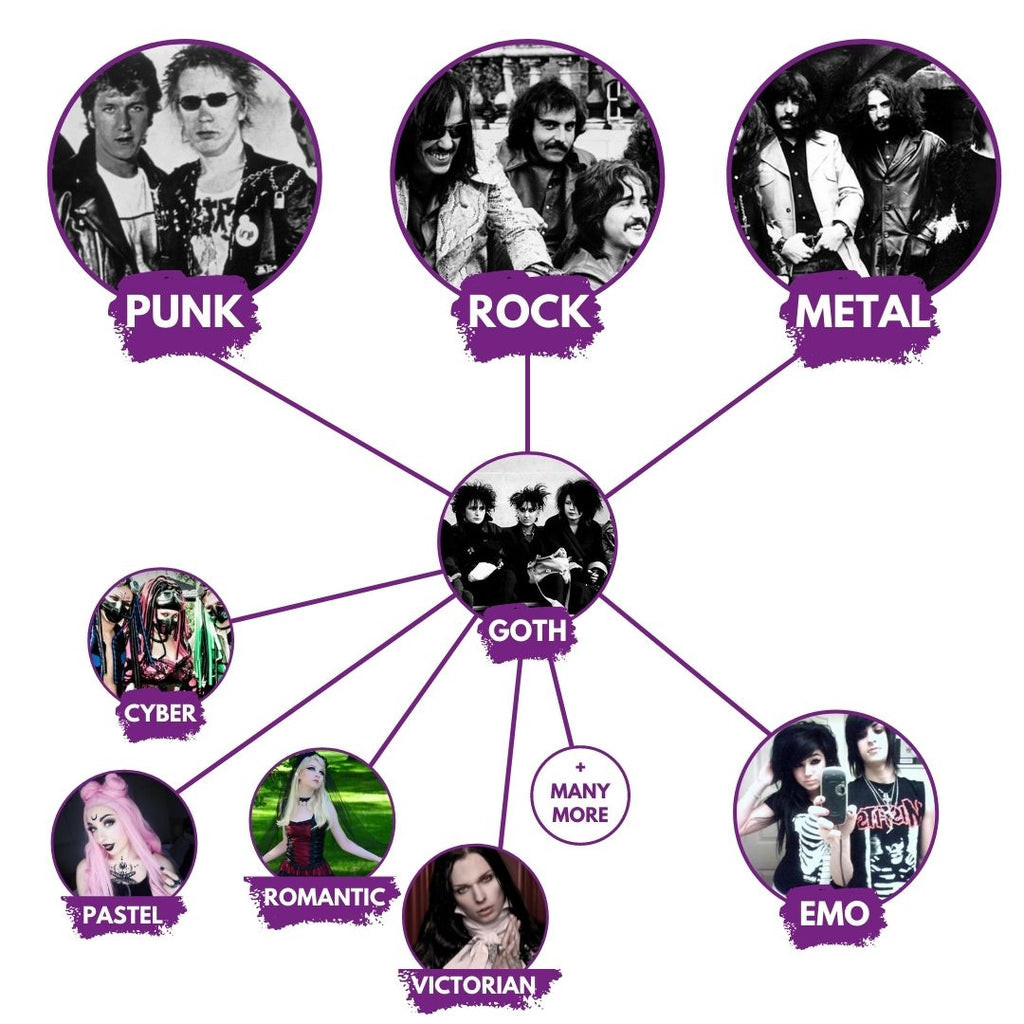
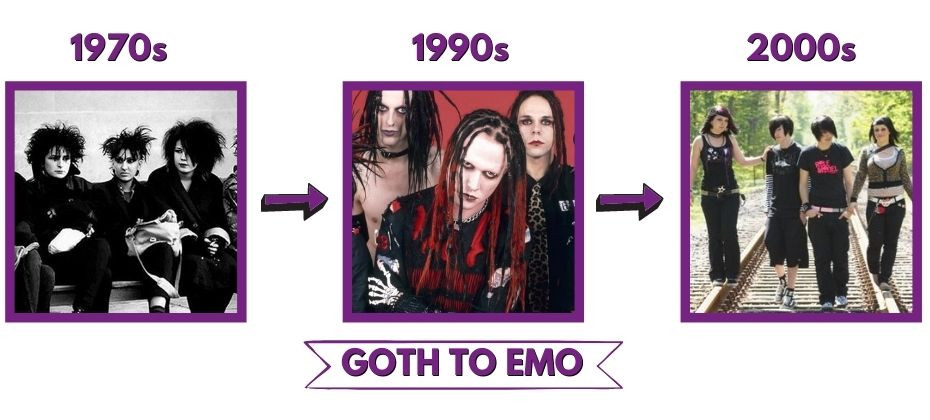
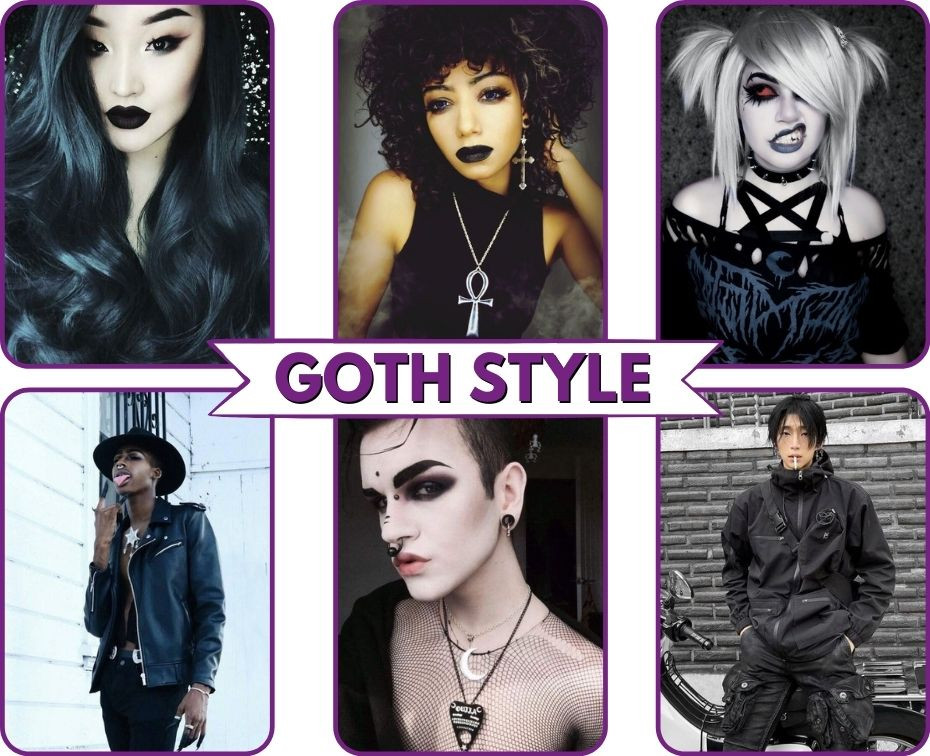
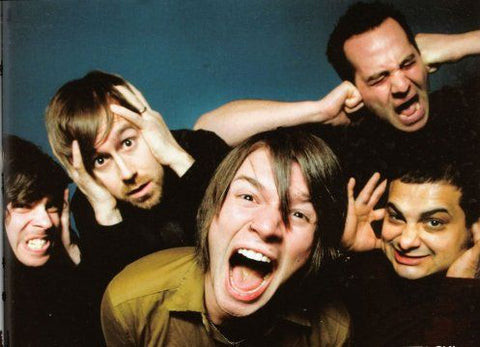
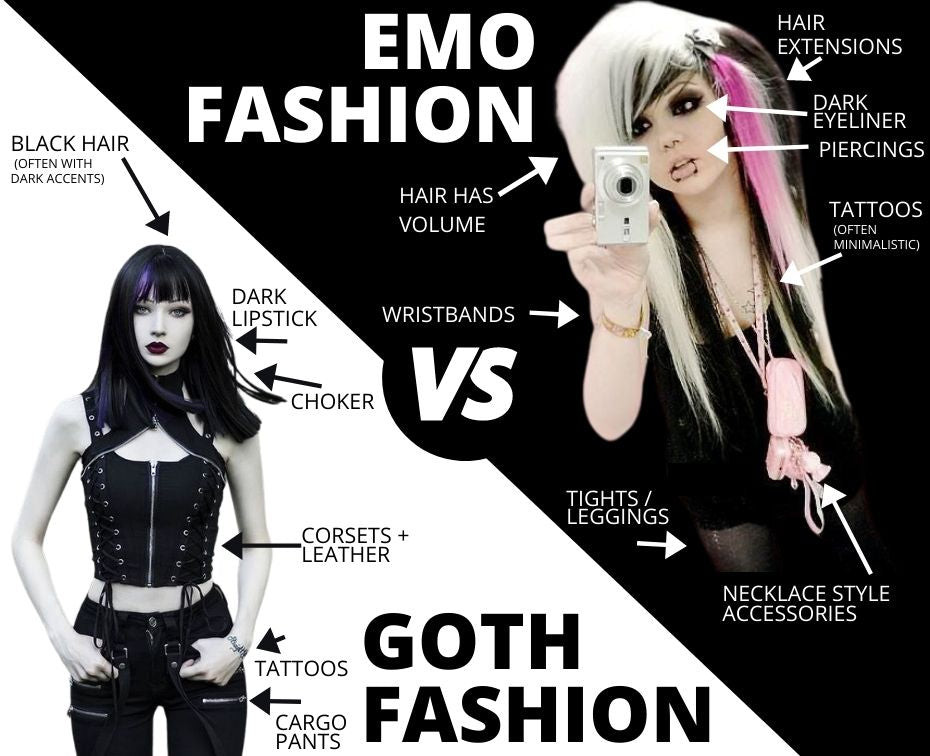
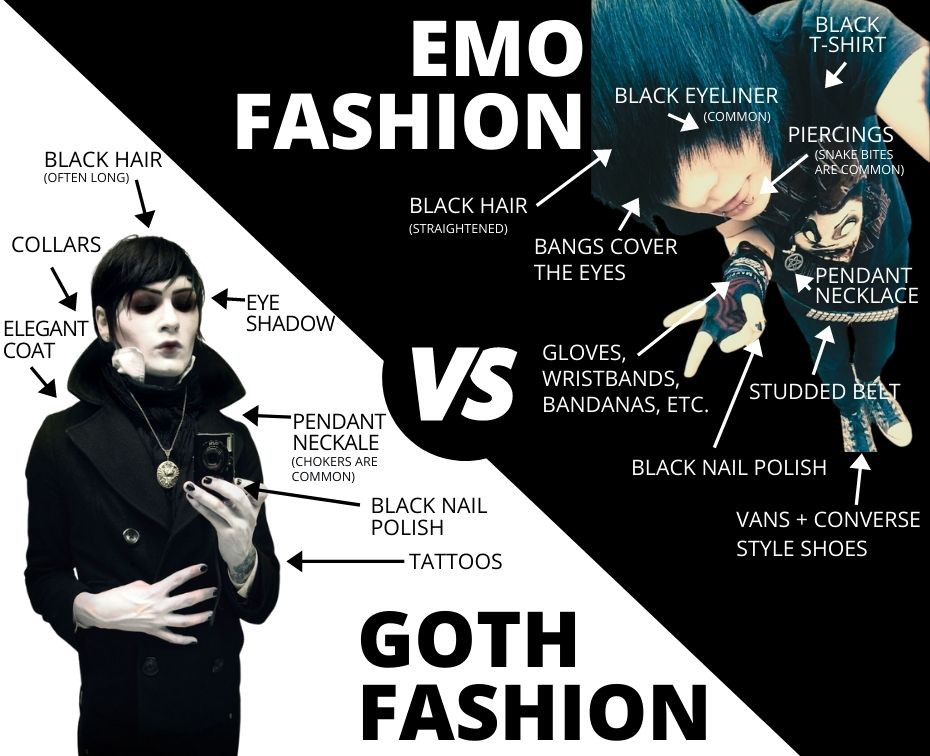
6. A Visual Guide to Emo vs Goth Fashion
Visual comparisons can highlight the nuances and distinguishing characteristics. Explore the key elements of both styles, focusing on clothing, hairstyles, makeup, and accessories.
6.1 Emo Girls vs Goth Girls
- Goth Girls: Often feature long, dark hair, pale skin, and dark makeup. Clothing choices may include lace dresses, corsets, and platform boots.
- Emo Girls: Typically sport colorful, choppy hair, often with long bangs. Outfits may consist of band t-shirts, skinny jeans, and sneakers.
6.2 Emo Guys vs Goth Guys
- Goth Guys: May wear long, dark hair, often with dramatic makeup. Clothing choices can include leather pants, vests, and dress shoes.
- Emo Guys: Typically sport short, choppy hair, often with long bangs. Outfits may consist of band t-shirts, skinny jeans, and skate shoes.
7. Practical Tips for Nailing the Emo or Goth Look
Achieving a signature emo or goth look requires more than just understanding the theory. Here are some practical tips to help you nail each style:
7.1 Tips for Emulating Goth Fashion
- Start with a Dark Base: Begin with a foundation of black clothing, such as dresses, pants, or skirts.
- Incorporate Victorian Elements: Add lace, velvet, or corsets to your outfits for a touch of gothic elegance.
- Accessorize with Gothic Motifs: Incorporate jewelry, hats, and other accessories with gothic motifs, such as crosses, skulls, and bats.
- Apply Theatrical Makeup: Use pale foundation, dark eyeliner, and lipstick to create a dramatic gothic look.
- Embrace Dark Hairstyles: Opt for long, dark hair, often styled with bangs or braids.
7.2 Tips for Emulating Emo Fashion
- Choose Casual Clothing: Select t-shirts, skinny jeans, hoodies, and sneakers for a relaxed emo look.
- Add DIY Elements: Incorporate ripped jeans, safety pins, and band patches to express your individuality.
- Experiment with Expressive Hairstyles: Try long, choppy bangs, bright colors, and asymmetrical cuts for a unique emo hairstyle.
- Keep Makeup Minimalist: Focus on eyeliner and mascara for a simple yet effective emo makeup look.
- Express Your Emotions: Let your emotions guide your style, and don’t be afraid to express yourself through your clothing and accessories.
8. The Enduring Appeal of Goth and Emo Fashion
Goth and emo fashions have remained popular for decades, offering individuals a way to express their individuality, creativity, and emotions. The enduring appeal lies in the sense of community and belonging they provide.
8.1 The Goth Subculture: A Community of Darkness and Individuality
The goth subculture is a community of individuals who share a passion for darkness, individuality, and creativity. Goths find solace and support in their shared interests and values, creating a sense of belonging and acceptance.
8.2 The Emo Subculture: A Haven for Emotion and Authenticity
The emo subculture is a community of individuals who share a passion for emotion, authenticity, and social justice. Emos find support and understanding in their shared experiences and values, creating a safe space for emotional expression and personal growth.
9. Where to Find Emo and Goth Fashion Pieces
To embrace either emo or goth fashion fully, you need access to the right resources. Whether you’re shopping online or in physical stores, you can discover the pieces that resonate with your style.
9.1 Online Retailers
- Etsy: Offers a wide selection of handmade and vintage goth and emo clothing and accessories.
- Amazon: Provides a variety of goth and emo clothing, shoes, and accessories at affordable prices.
- Hot Topic: Specializes in alternative fashion, including goth and emo styles.
- mens-fashion.net: Discover the latest trends and curated collections that cater to both goth and emo aesthetics, ensuring you stay ahead in the fashion game.
- Address: 227 W 27th St, New York, NY 10001, United States
- Phone: +1 (212) 217-5800
- Website: mens-fashion.net
9.2 Physical Stores
- Thrift Stores: Offer a treasure trove of unique and affordable goth and emo clothing and accessories.
- Vintage Shops: Specialize in vintage clothing and accessories, including goth and emo styles.
- Local Boutiques: May carry goth and emo clothing and accessories from local designers.
10. Maintaining Authenticity: Respecting the Subcultures
When embracing emo or goth fashion, it’s essential to respect the subcultures and their values. Avoid appropriating or misrepresenting the styles, and instead, focus on expressing your individuality and creativity within the context of the subcultures.
10.1 Avoiding Stereotypes and Misconceptions
Be aware of common stereotypes and misconceptions about goth and emo subcultures. Avoid perpetuating these stereotypes, and instead, strive to promote understanding and acceptance.
10.2 Embracing the Values of the Subcultures
Embrace the values of goth and emo subcultures, such as individuality, creativity, and emotional expression. Use your fashion choices to express these values and to contribute to the communities.
FAQ: Emo vs Goth Fashion
1. What is the main difference between emo and goth?
Goth embraces darkness and elegance, while emo champions emotional expression and individuality.
2. What kind of music do goths listen to?
Goths listen to gothic rock, darkwave, and ethereal wave.
3. What kind of music do emos listen to?
Emos listen to emo-pop, pop-punk, and alternative rock.
4. What are some common elements of goth fashion?
Common elements of goth fashion include dark colors, Victorian and Elizabethan influences, theatrical makeup, and elaborate accessories.
5. What are some common elements of emo fashion?
Common elements of emo fashion include casual clothing, DIY elements, expressive hairstyles, and minimalist makeup.
6. How can I create a goth look?
To create a goth look, start with a dark base, incorporate Victorian elements, accessorize with gothic motifs, apply theatrical makeup, and embrace dark hairstyles.
7. How can I create an emo look?
To create an emo look, choose casual clothing, add DIY elements, experiment with expressive hairstyles, keep makeup minimalist, and express your emotions.
8. Where can I find goth and emo fashion pieces?
You can find goth and emo fashion pieces online at Etsy, Amazon, Hot Topic, and mens-fashion.net, or in physical stores at thrift stores, vintage shops, and local boutiques.
9. How can I respect goth and emo subcultures?
To respect goth and emo subcultures, avoid stereotypes and misconceptions, embrace the values of the subcultures, and express your individuality and creativity within the context of the subcultures.
10. Is goth or emo fashion right for me?
Ultimately, the choice of whether to embrace goth or emo fashion is a personal one. Consider your interests, values, and style preferences, and choose the subculture that resonates with you the most.
Final Thoughts
Emo vs goth fashion is more than just clothing. It’s an expression of individuality, creativity, and emotion. By understanding the origins, aesthetics, musical preferences, and ideological underpinnings of these subcultures, you can make informed fashion choices that reflect your unique personality and values. For the latest trends, style tips, and a curated selection of goth and emo fashion, visit mens-fashion.net. Explore our collections and find the pieces that speak to your soul, helping you express your true self with confidence and flair.
